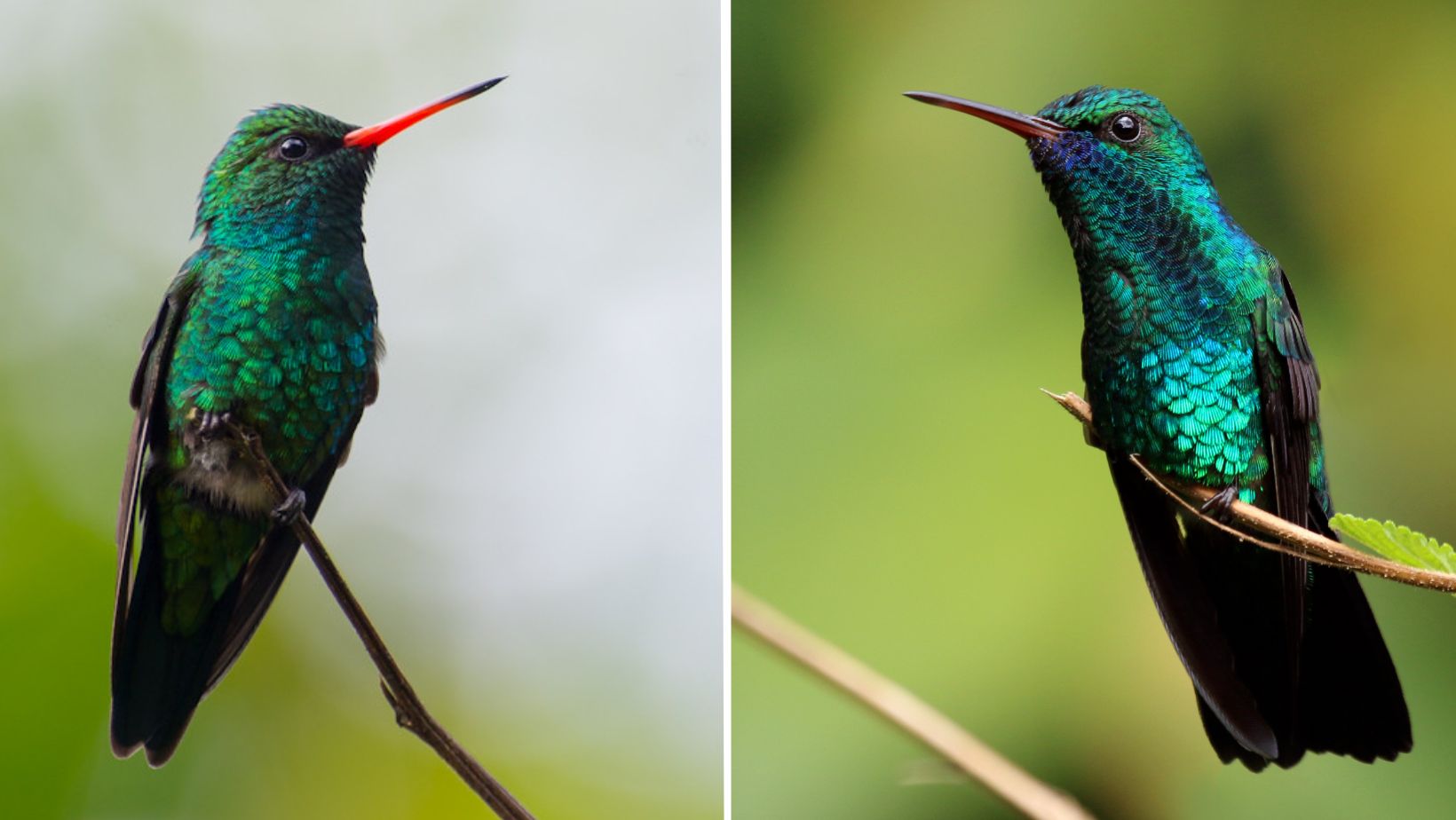
Clad in a suit of metallic green accented with blue, it is not clear why this delightful hummingbird is often overlooked.
Meet the blue chinned Hummingbird:
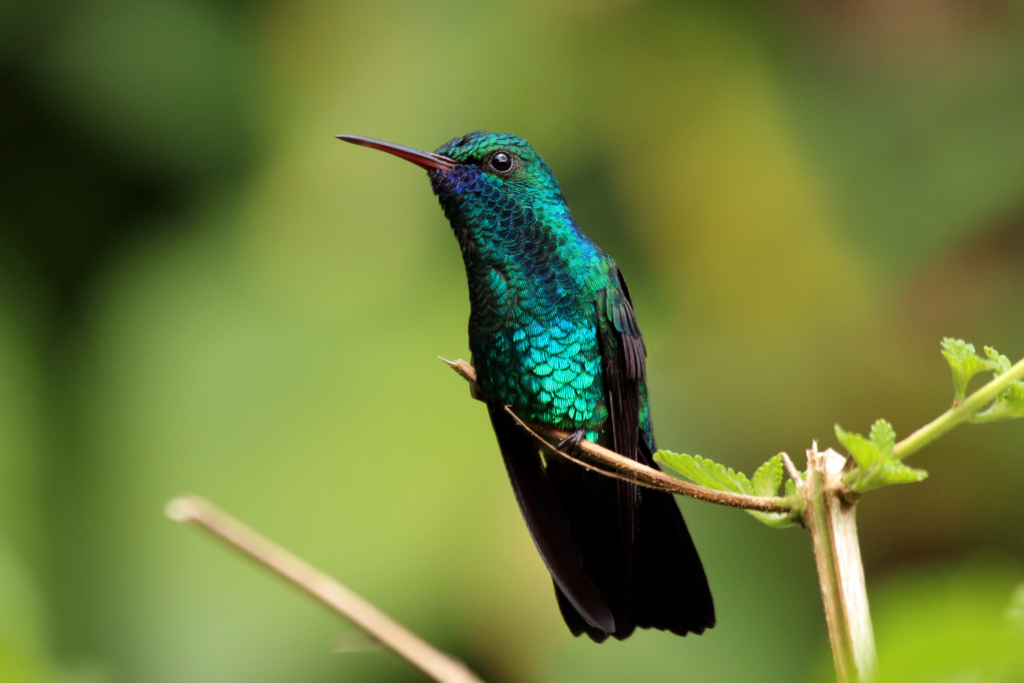 “File:Blue-chinned sapphire (Chlorestes notata notata) male.jpg” by Charles J Sharp is licensed under CC BY-SA 4.0.
“File:Blue-chinned sapphire (Chlorestes notata notata) male.jpg” by Charles J Sharp is licensed under CC BY-SA 4.0.
Measuring a mere 8.9 cm, the Blue Chinned Sapphire (Chlorestes notata) is a pint-sized wonder of the avian world. This diminutive bird tips the scales at just 3.8 grams. Identifying these petite birds is relatively straightforward. They sport a fairly straight beak, characterized by an upper mandible in black and a reddish lower mandible. Males and females exhibit slight yet noticeable variations in their appearance. Males predominantly flaunt dark green plumage, which appears darker on their upper parts than their lower regions. White thighs and a forked blue tail further distinguish the males, while their throats shimmer with the same azure hue.
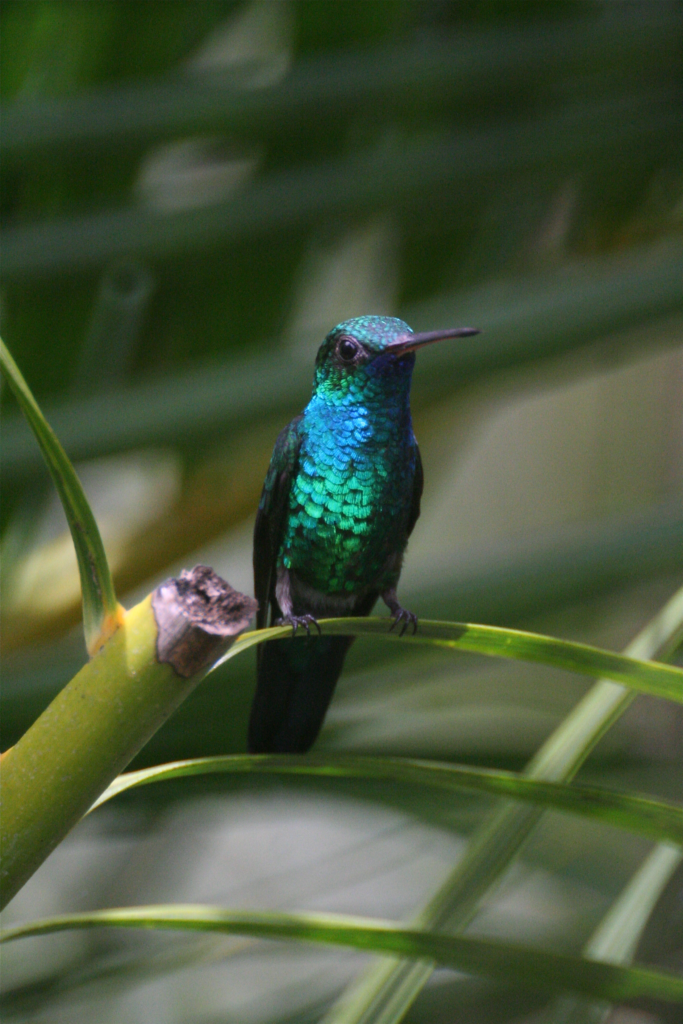 “Male Blue-chinned Sapphire (Chlorestes notatus)” by DrPhilippLehmann is licensed under CC BY-SA 3.0.
“Male Blue-chinned Sapphire (Chlorestes notatus)” by DrPhilippLehmann is licensed under CC BY-SA 3.0.
In contrast, females stand apart due to their white underparts adorned with green speckles.
The Blue Chinned Sapphire predominantly inhabits forested areas, earning it the moniker “forest bird.”
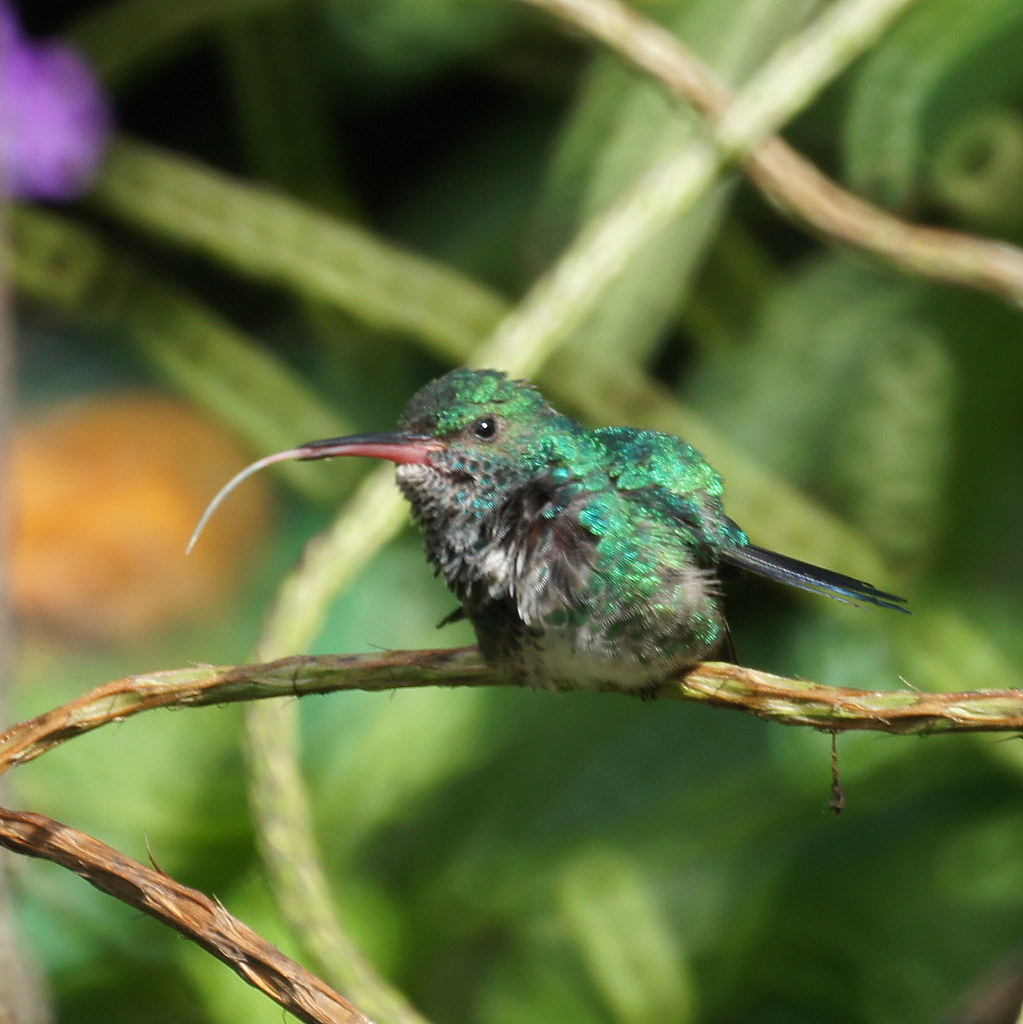 “Blue-chinned Sapphire” by Mike’s Birds is licensed under CC BY-SA 2.0.
“Blue-chinned Sapphire” by Mike’s Birds is licensed under CC BY-SA 2.0.
These charming hummingbirds can be spotted in locales like Colombia, Trinidad, Brazil, and Peru, provided the terrain boasts an abundance of substantial trees, such as farms nestled amidst verdant foliage.
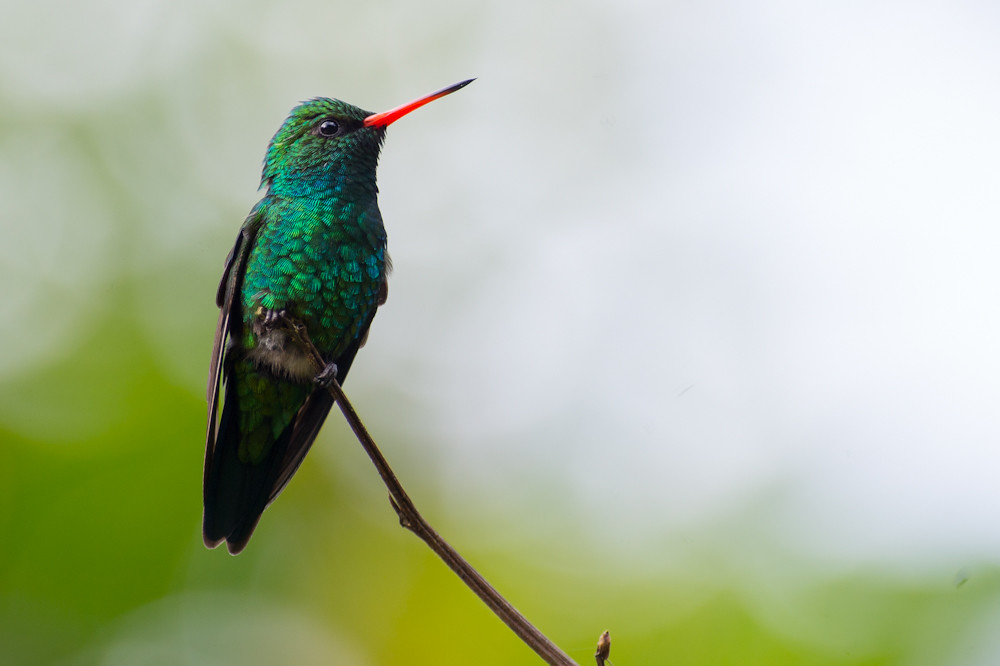 “Chlorostilbon notatus” by jquental is licensed under CC BY 2.0.
“Chlorostilbon notatus” by jquental is licensed under CC BY 2.0.
Although it occasionally ventures into cultivated regions, its presence outside of forests is generally restricted to areas graced by large trees.
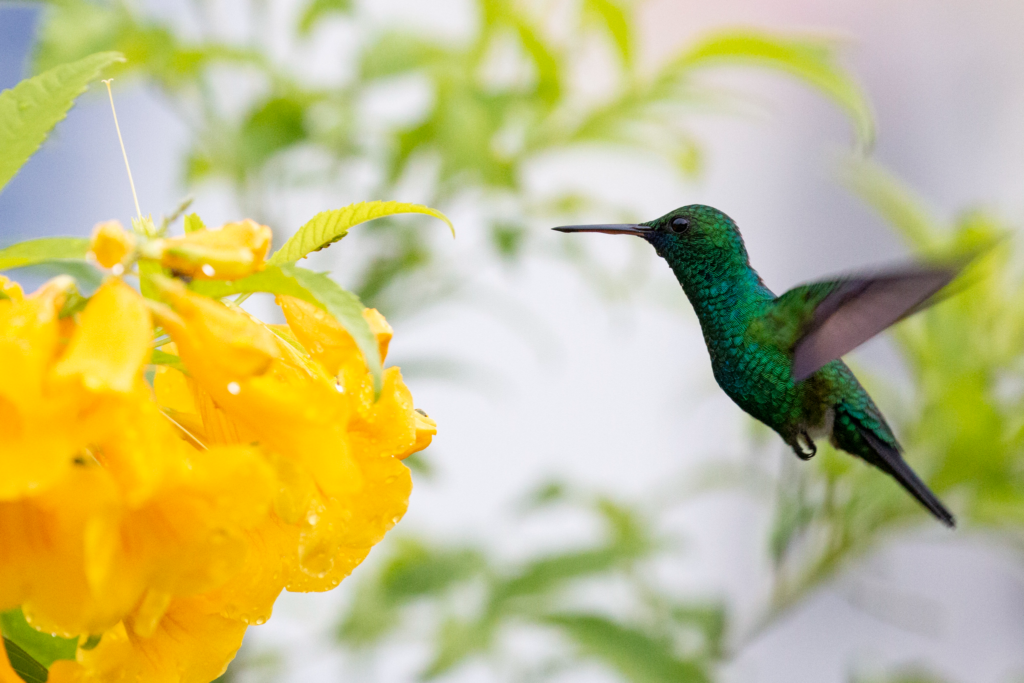 “blue-chinned sapphire” by Thomaz de Carvalho Callado is licensed under CC BY 4.0.
“blue-chinned sapphire” by Thomaz de Carvalho Callado is licensed under CC BY 4.0.
Feeding primarily on insects and nectar, the Blue Chinned Sapphire adheres to a generalist diet. While there is no strict dietary regimen, males establish and tenaciously guard feeding territories, a testament to their resolute nature.
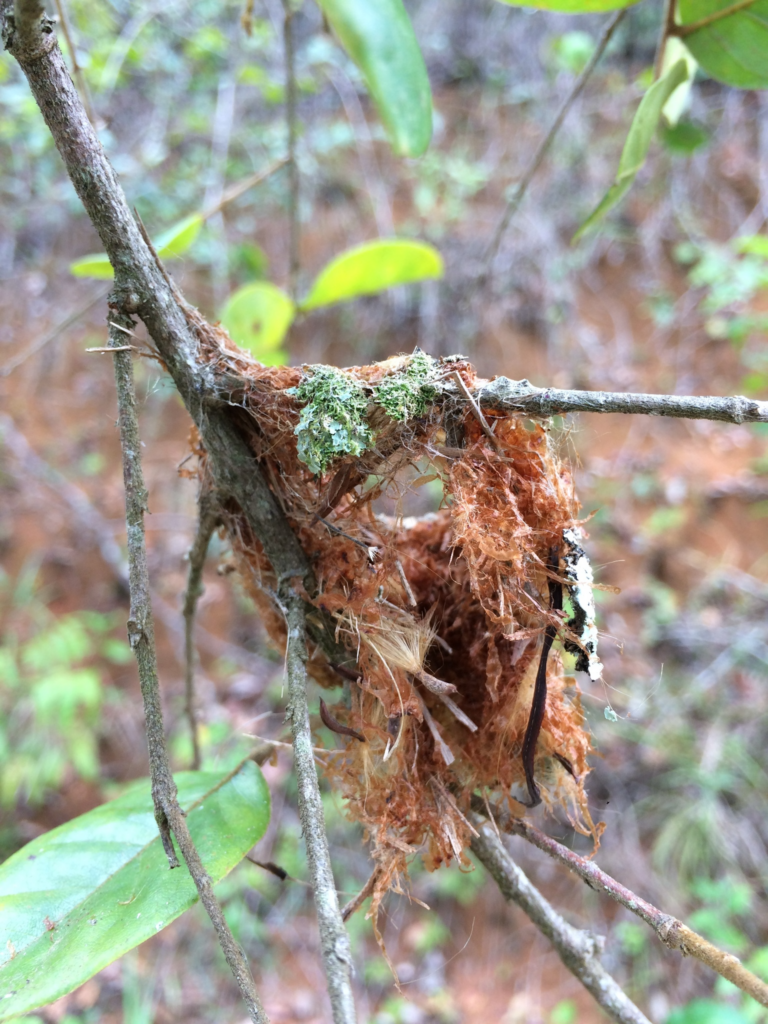 “blue-chinned sapphire” by Ben P is licensed under CC BY 4.0.
“blue-chinned sapphire” by Ben P is licensed under CC BY 4.0.
The female of this species carefully lays her eggs within a deep cup-shaped nest, thoughtfully crafted from lichen and other delicate plant materials. This cozy nest is securely positioned on a horizontal tree branch, providing a safe and stable environment for her precious offspring. The incubation period lasts approximately 16 days, during which she diligently tends to her eggs. After this incubation period, it takes another 18 to 19 days for the young birds to reach the fledgling stage, marking the beginning of their journey towards independence.
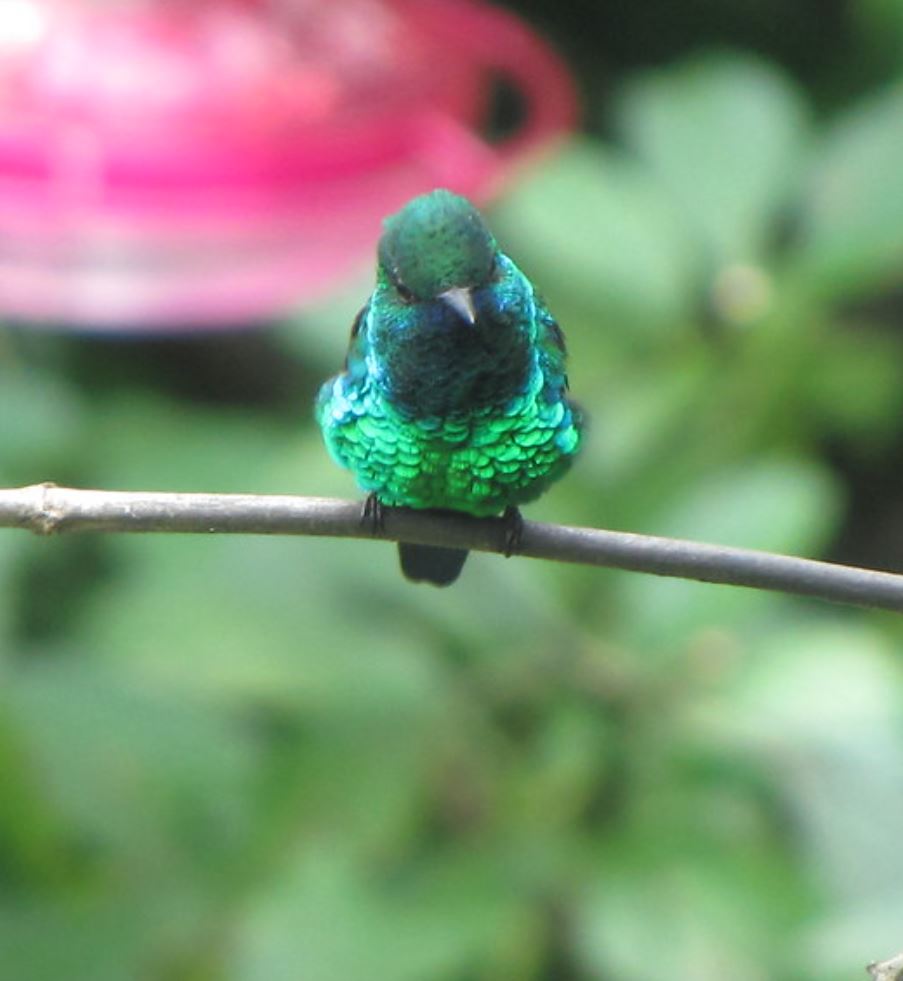 “Blue-chinned Sapphire (Chlorestes notatus)” by zarfrost is licensed under CC BY 2.0. (cropped)
“Blue-chinned Sapphire (Chlorestes notatus)” by zarfrost is licensed under CC BY 2.0. (cropped)
This bird is regarded as of Least Concern on the IUCN Red List.
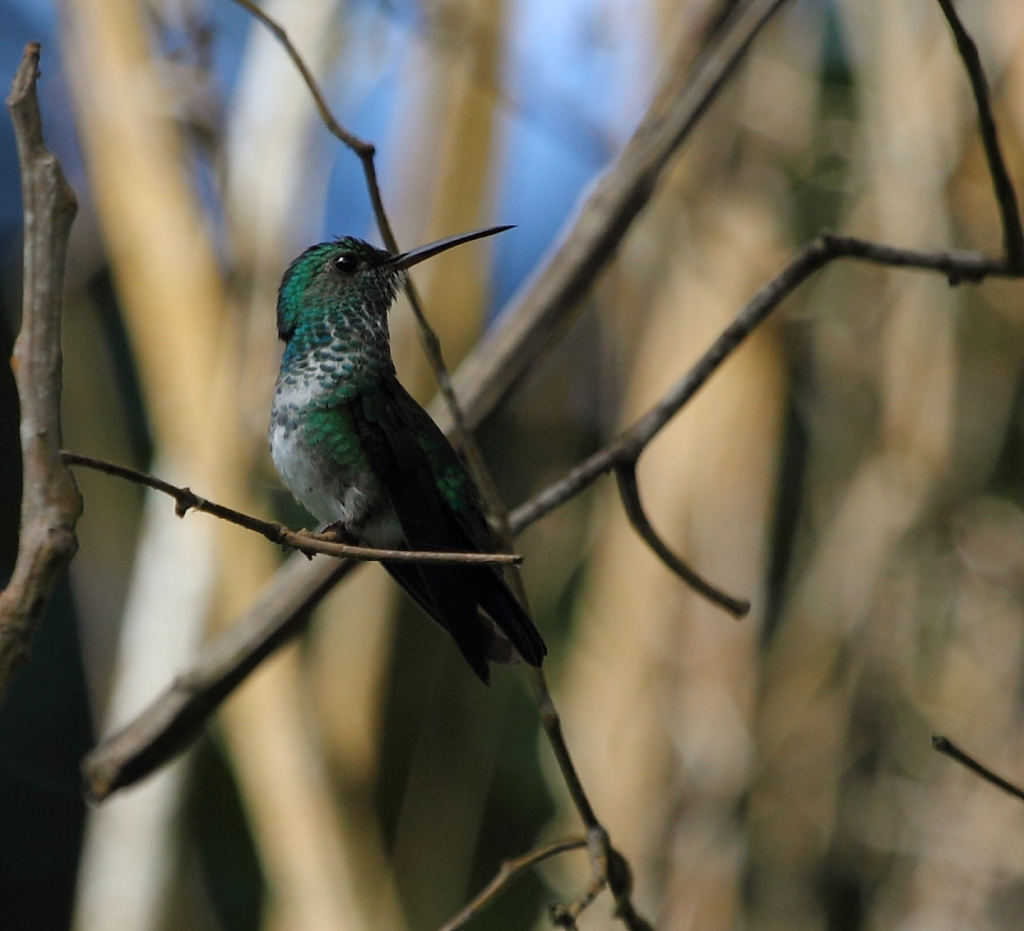 “Chlorestes notata female” by Feroze Omardeen is licensed under CC BY 2.0.
“Chlorestes notata female” by Feroze Omardeen is licensed under CC BY 2.0.
Why not watch this bird go about his daily activities:
This article uses material from Wikipedia.org which is licensed under the GNU Free Documentation License via Copyright Wikipedia. Images on this page are the sole property of the photographers (unless marked as Public Domain). Please read the license and or contact the photographers directly before using them for any purpose. Thank you all. Mostly
A Somewhat Innocuous Bird Wearing A Coat Of Dull Brown Offset By A Head Of Brilliant Blue!
Please SHARE this article with all your bird-loving friends and family.

